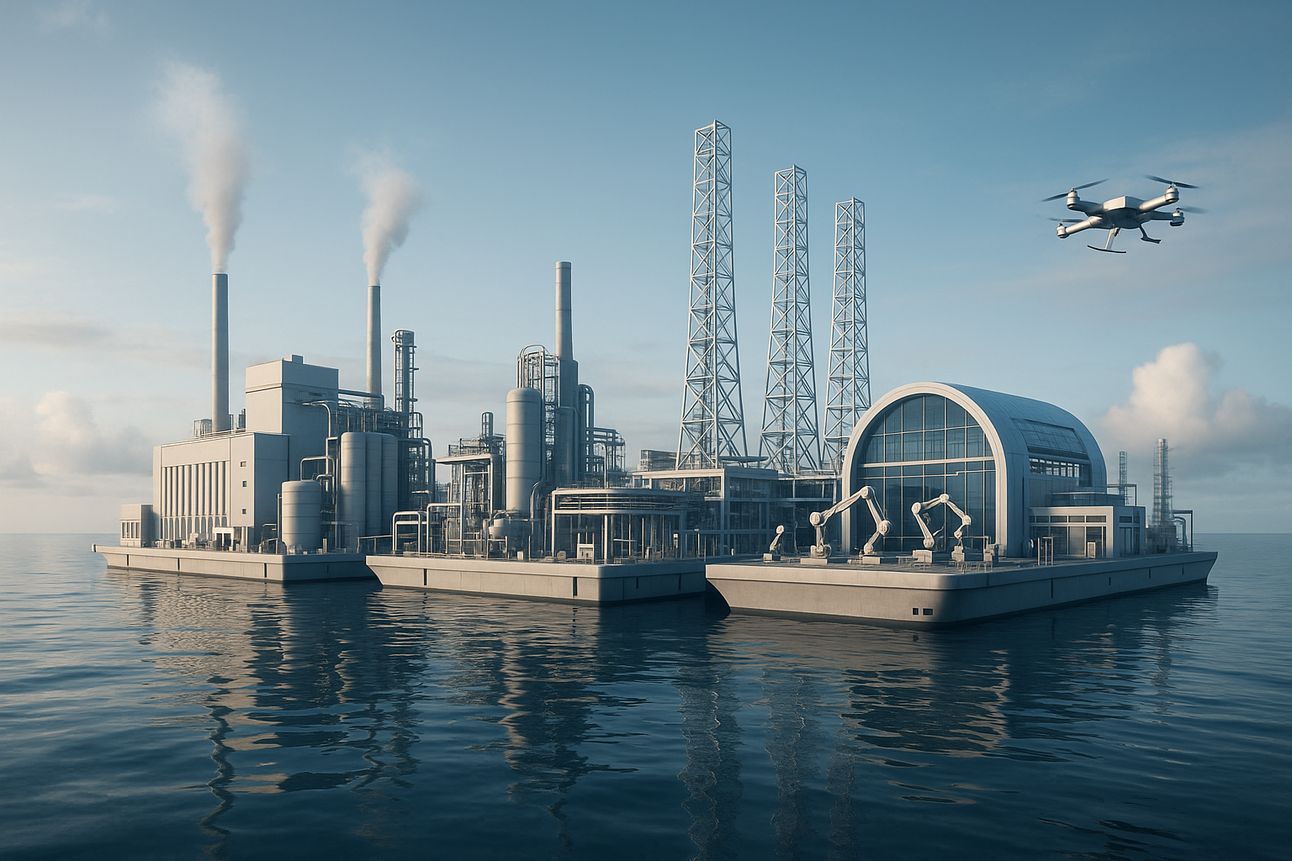
Good morning! Latin America is emerging as a nearshore powerhouse in the floating economy, capturing manufacturing investments as companies rethink their global supply chains. Geopolitical shifts and the drive to bring production closer to home are driving this trend, creating massive opportunities for entrepreneurs and investors. Let’s dive into what this means for the future.
News Flash:
Latin America’s Nearshoring Boom 💼
Nearshoring in Latin America is accelerating as businesses seek closer and more resilient supply chains. Mexico, Brazil, and Central America lead the charge, offering low-cost labor, trade advantages, and proximity to the U.S. Manufacturers are increasingly opting for these locations to cut costs and reduce risks. These projects signal a clear message: Latin America is the next big hub for production in the global floating economy.
In Case You Missed It:
Mexico Takes the Lead 🚛
Mexico recently overtook China as the U.S.’s top trading partner, driven by a surge in exports of cars, electronics, and consumer goods. Northern states like Nuevo León and Baja California have become epicenters of manufacturing, attracting major brands. The strategic location, along with USMCA’s trade benefits, makes it the ideal nearshoring choice. As a result, Mexican exports to the U.S. hit record highs in 2023.
Overcoming Obstacles:
Entrepreneurial Challenges: While Latin America offers clear advantages, challenges remain. Logistical bottlenecks, rising wage expectations in border regions, and energy constraints are common issues. Successful entrepreneurs are focusing on regional integration and infrastructure improvements to stay competitive. Companies like Protela (Colombia) are setting up new textile factories in Guatemala to leverage low costs and quick U.S. market access.
Top 3 Challenges in Nearshore Manufacturing:
Infrastructure Gaps: Ports and highways are improving but still lag behind Asian competitors.
Skilled Workforce: Meeting the technical demands of high-value manufacturing.
Policy Stability: Navigating shifts in trade policies and local governance.
🔗 JLL Research – Nearshoring Challenges (2024)
The Big Idea:
The Caribbean’s Textile Renaissance 👗
Central America and the Caribbean are reclaiming their status as textile production hubs. Thanks to CAFTA-DR, countries like Honduras and the Dominican Republic are experiencing a boom. Apparel exports from Honduras to the U.S. surged 27.5% in early 2024. Quick shipping times and duty-free access make the region a go-to for fast fashion.
Business Impact:
Why Nearshore Zones Matter for the Floating Economy 🌊
Nearshore production zones support the floating economy by streamlining maritime logistics. Ports from Mexico to Colombia are modernizing to handle increased cargo volumes. For example, Panama’s new logistics parks near the canal make it easier to distribute goods throughout the Americas. Companies specializing in marine logistics, warehousing, and coastal transport stand to benefit significantly.

Investing in Undervalued Nearshore Hubs 🏗️
While Mexico and Brazil dominate, Paraguay and Uruguay are emerging as cost-effective alternatives. Paraguay’s maquila program attracted over 300 factories in 2023, specializing in auto parts and textiles. Uruguay’s technology parks are appealing to IT service companies that complement manufacturing processes. Investors looking for low competition and high growth should consider these up-and-coming zones in the local Central American Floating Economy.
Newsworthy Number:
$78 Billion 💰: The Potential Annual Export Increase from Nearshoring
According to the Inter-American Development Bank (IDB), Latin America could capture up to $78 billion in new exports annually by embracing nearshore manufacturing. This economic boost could dramatically reshape regional economies, creating jobs and spurring innovation.
Around the Web:
Mexico’s Manufacturing Surge: Tesla’s land purchase is just the beginning of a new EV supply chain.
Panama’s Canal Strategy: How Panama plans to expand its role as a logistics leader.
🔗 Panama Canal Authority – Modernization Plans (2024)
Quote of Note:
"Latin America has become an increasingly attractive destination of nearshore investment" – Control Risks
Final Thoughts:
The rise of nearshore production zones in Latin America is not just a fleeting trend but a structural shift in global manufacturing. For those ready to invest and innovate, the region offers unmatched opportunities. Whether you’re in manufacturing, logistics, or tech, Latin America’s nearshoring boom could be your next big move.
What nearshore opportunities are you exploring? Are you ready to ride the wave of Latin America’s production boom?
Let’s stay ahead together. 🚀
